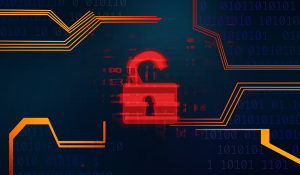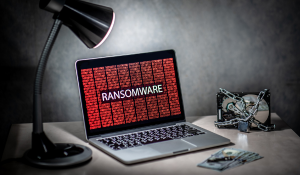In our increasingly digital landscape, the importance of understanding and defending against computer worms cannot be overstated. Whether you're a small startup or a multinational corporation, the consequences of a worm infection can be devastating, ranging from data breaches and financial losses to damage to your organization's reputation.
In this blog post, we will delve into the world of computer worms, exploring what they are, how they operate, and most importantly, how businesses and organizations can fortify their defenses to protect against these stealthy intruders. So, let's embark on this journey to safeguard your business fortress from the ever-present cyberattack of computer worms.
A. Computer worms: what are they?
Computer worms are a type of malicious software program (malware) designed to replicate and spread itself across computer networks and systems, typically without requiring user intervention. Unlike viruses, which attach themselves to existing files and programs, worms are standalone programs capable of self-replication.
Once a worm infiltrates a system, it seeks out vulnerabilities to exploit and may spread to other connected devices or networks, causing disruptions, data breaches, or other harmful consequences. Computer worms often propagate rapidly and can have a significant impact on the affected systems and the overall network's performance, making them a serious cybersecurity threat.
B. 8 types of computer worms
Computer worms come in various forms, each with distinct characteristics and methods of spreading or causing harm. Here are some different types of computer worms:
1. Email Worms:
- Description: These worms typically spread through email attachments or links. They exploit vulnerabilities in email clients or operating systems and may trick users into opening infected attachments or clicking malicious links.
- Examples: The "ILOVEYOU" worm and the "Melissa" virus are notable email worms from the past.
2. Network Worms:
- Description: Network worms exploit vulnerabilities in network protocols and services to self-replicate across computers and servers within a network or the internet. They often target unpatched systems.
- Examples: The "Blaster" (MSBlast or MS32) worm and the "Conficker" worm are well-known network worms.
3. Internet Worms:
- Description: These worms spread primarily over the internet, targeting internet-facing servers and devices. They can exploit vulnerabilities in web services, routers, and other network infrastructure.
- Examples: The "Code Red" and "Nimda" worms are examples of internet worms.
4. File-sharing Worms:
- Description: These worms proliferate through peer-to-peer (P2P) file-sharing networks or shared drives. They often disguise themselves as desirable files (e.g., music, movies) to trick users into downloading and executing them.
- Examples: The "Storm Worm" and "Mydoom" are instances of file-sharing worms.
5. Instant Messaging (IM) Worms:
- Description: IM worms spread through instant messaging platforms by sending malicious links or files to a user's contact list. When clicked, these links or files can infect the recipient's system.
- Examples: The "IM.GiftCom" worm targeted various IM clients, including MSN Messenger.
6. USB Worms:
- Description: USB worms leverage removable storage devices, such as USB drives, to spread from one computer to another. They exploit the "autorun" feature in Windows or other vulnerabilities in the operating system.
- Examples: The "Stuxnet" worm, though primarily a targeted attack, used USB drives for propagation.
7. IoT (Internet of Things) Worms:
- Description: These worms target vulnerable IoT devices and smart appliances connected to the internet. They can exploit weak passwords or unpatched firmware to gain access and spread within IoT networks.
- Examples: While specific IoT worms may not have widespread notoriety, IoT security remains a growing concern.
8. Worms with Botnet Capabilities:
- Description: Some worms are designed not only to replicate but also to turn infected devices into part of a botnet, allowing remote control by malicious actors. These worms often have command and control (C&C) servers.
- Examples: The "Sasser" worm is an example of a worm with botnet capabilities.
It's essential to keep in mind that the threat landscape is continuously evolving, and new types of computer worms may emerge over time. Effective cybersecurity practices, such as keeping software up to date, using strong passwords, and employing security software, are crucial to mitigating the risks associated with these malicious programs.
C. Computer worms vs. viruses vs. Trojan virus
Computer worms, viruses, and Trojan viruses are all types of malicious software (malware), but they differ in how they spread, behave, and their overall objectives. Here are the key differences between these three types of malwares.
| |
Computer Worms |
Computer Viruses |
Trojan Viruses (Trojans) |
| Spreading Mechanism |
Computer worms are self-replicating programs that spread independently, typically through network vulnerabilities or by exploiting security weaknesses. They don't need a host file to attach to; they can propagate on their own. |
Computer viruses attach themselves to executable files or documents. They need a host file to infect, and they can spread when the infected file is executed. |
Trojans disguise themselves as legitimate software or files. Users often unknowingly install Trojans, thinking they are benign programs.
Propagation: |
| Propagation |
They can spread rapidly across networks and systems, often without user interaction, making them highly contagious. |
Viruses require user action to spread, such as opening an infected email attachment or executing an infected program. |
Trojans rely on social engineering to trick users into downloading and executing them. They don't self-replicate like worms or viruses. |
| Purpose |
Worms are designed to propagate and spread across as many systems as possible. They may have destructive payloads, steal data, or create backdoors for remote control. |
Viruses aim to replicate and spread while potentially causing damage to files, applications, or the system as a whole. They can delete or corrupt data. |
Trojans are typically used to gain unauthorized access to a system, steal sensitive data, or provide a backdoor for remote control by cybercriminals. |
| Examples |
Code Red, Slammer, and Blaster are famous worm examples. |
The "CIH" or "Chernobyl" virus is a well-known computer virus. |
The "Zeus" Trojan and the "Back Orifice" Trojan are notable examples |
In summary, the primary differences lie in how these malware types spread and their objectives. Worms are self-replicating and highly contagious, aiming to spread across networks. Viruses attach themselves to host files and require user interaction to spread, often causing damage to files. Trojans masquerade as legitimate software and rely on deception to gain access or steal data.
D. Computer worms: how do they work?
Computer worms are a type of malware designed to replicate themselves and spread across computer networks and systems. They operate autonomously and differ from viruses, which attach themselves to host files. Here's a step-by-step explanation of how computer worms work:
- Initial Entry: Computer worms typically enter a system through a vulnerability or security weakness. This vulnerability could exist in the operating system, network services, or software applications. Worms often exploit known security flaws, which is why keeping software and systems up-to-date with security patches is crucial.
- Infiltration: Once inside the system, the worm starts executing its code. It doesn't need a host file to attach to, as viruses do, making it self-contained.
- Replication: The primary objective of a computer worm is to reproduce itself. It does this by creating copies or clones of its code. These copies can be identical to the original worm or slightly modified to evade detection.
- Network Scanning: To spread to other systems, worms scan the local network or the internet for potential targets. They may use a variety of techniques to identify vulnerable devices, including scanning IP addresses, checking for open ports, or searching for specific vulnerabilities.
- Exploitation: When a vulnerable system is identified, the worm uses an exploit to gain access. Exploits are pieces of code that take advantage of known security weaknesses in the target system, such as unpatched software, default passwords, or misconfigured network settings.
- Infection: Once the worm gains access to a new system, it injects a copy of itself into that system's memory. This copy then starts executing and attempts to spread further by scanning for more vulnerable systems.
- Propagation: The cycle continues as the newly infected system becomes a host for the worm, which repeats the scanning, exploitation, and infection process. This propagation continues exponentially, leading to rapid and widespread infection across networks and systems.
- Payload: Some worms carry payloads, which are additional functions or actions beyond replication and spreading. Payloads can vary widely, from data theft and remote control of infected systems to launching distributed denial-of-service (DDoS) attacks or other malicious activities.
- Stealth and Evasion: To avoid detection and removal, worms may employ evasion techniques. This includes changing their code or behavior to evade signature-based antivirus scans and using encryption to hide their communications.
- Command and Control (C&C): Some worms establish a connection to a remote server controlled by cybercriminals, creating a backdoor for communication and control. This allows malicious actors to issue commands, update the worm, or receive stolen data.
Computer worms can have devastating effects on both individual systems and large-scale networks. Their ability to self-replicate and spread rapidly makes them a significant cybersecurity threat. Preventive measures, such as regularly updating software, using firewalls, intrusion detection systems, and employing good cybersecurity practices, are essential to mitigate the risks associated with computer worms.
E. How you can recognize that your computer has a computer worm?
Recognizing that your computer may be infected with a computer worm is crucial for prompt action and preventing further damage. Here are some signs and symptoms that employees can look out for to identify a potential computer worm infection:
-
Unusual Network Activity: A significant decrease in computer performance, such as slower response times, frequent freezes, or crashes, may indicate a worm's presence.
-
Slow Performance: A significant decrease in computer performance, such as slower response times, frequent freezes, or crashes, may indicate a worm's presence, as worms can consume system resources.
-
Unexplained Data Usage: A noticeable increase in data usage on your network or internet connection, especially when you're not actively downloading or streaming, might suggest worm-related activity.
-
Unexpected Pop-ups or Advertisements: Worms may cause pop-up windows or display unwanted advertisements on your computer screen.
-
Disabled Security Software: If your antivirus or security software suddenly becomes disabled, it could be a sign that a worm is attempting to evade detection.
-
Emails Sent Without Your Knowledge: Some worms send spam emails from your email account without your consent. Check your sent items folder for any unusual or unsolicited emails.
-
Unusual or Missing Files: Worms might modify or delete files on your computer. If you notice missing files or unexpected changes, it could be due to a malware infection.
-
High CPU Usage: Open the Task Manager (Ctrl+Shift+Esc on Windows, Activity Monitor on macOS) and check for processes using excessive CPU resources. A worm might show up as an unfamiliar process.
-
Firewall Alerts: If your firewall suddenly starts blocking outgoing or incoming connections and you haven't made any recent changes to your settings, it could be a sign of a worm's activity.
-
Unsolicited Password Prompts: If you receive prompts to enter your password for no apparent reason, it could be a sign that a worm is attempting to gain access to your system or accounts.
-
Unusual System Errors or Messages: Worms may generate error messages or unusual system notifications. Pay attention to any messages that seem out of the ordinary.
-
Unwanted Browser Toolbars or Extensions: Worms may install browser toolbars, extensions, or plugins without your consent. Check your browser settings for any unfamiliar additions.
If you suspect your computer is infected with a worm or any other type of malware, it's essential to take immediate action:
- Isolate the Computer: Disconnect it from the network or the internet to prevent the worm from spreading to other devices.
- Run a Full Antivirus Scan: If you can, use a reliable antivirus or anti-malware program to scan and remove the infection.
- Update Software: Ensure your operating system and all software applications are up to date with the latest security patches.
- Change Passwords: Change passwords for your accounts, especially if you suspect that the worm may have accessed sensitive information.
- Seek IT Assistance: Contact your organization's IT department or IT support service for assistance and further guidance.
F. 10 examples of computer worms
Computer worms have been responsible for some of the most significant cybersecurity incidents in history. Here are notable examples of computer worms:
- ILOVEYOU Worm: Released in May 2000, this worm spread via email and had a destructive payload. It disguised itself as a love letter in the email subject, tempting users to open the attached file. Once opened, it infected the system and could overwrite or delete critical files.
- Slammer (SQL Slammer): Emerged in January 2003, the Slammer worm targeted vulnerabilities in Microsoft SQL Server. It spread rapidly and caused widespread network congestion and outages by generating a massive volume of network traffic.
- Blaster (MSBlast or MS32): Appeared in August 2003, the Blaster worm exploited a vulnerability in Microsoft Windows. It caused infected systems to repeatedly reboot and attempted to propagate to other vulnerable computers. It also carried a message critical of Microsoft.
- Conficker: First identified in 2008, the Conficker worm was known for its sophisticated propagation techniques. It exploited vulnerabilities in Windows systems and created a massive botnet, making it one of the most extensive worm outbreaks in history.
- Mydoom: Mydoom, which emerged in January 2004, spread via email and file-sharing networks. It contained a backdoor that allowed remote control of infected computers. Mydoom set records for the fastest-spreading email worm at the time.
- Sasser: Sasser, discovered in April 2004, exploited a Windows vulnerability. It could propagate without the need for user interaction and caused widespread disruption by infecting a large number of systems.
- Nimda: Nimda, released in September 2001, was notable for its multi-vector attack approach. It could spread via email, web server vulnerabilities, and network shares. Nimda's name is derived from "admin" spelled backward.
- Code Red: The Code Red worm, which emerged in July 2001, targeted Microsoft IIS web servers. It defaced websites, slowed down internet traffic, and attempted to spread further by infecting vulnerable servers.
- Stuxnet: Discovered in 2010, Stuxnet was a highly sophisticated worm designed to target industrial control systems, particularly those used in Iran's nuclear program. It was one of the first known cyberweapons developed for a specific strategic purpose.
- SQL Slammer (2002): This worm targeted vulnerabilities in Microsoft SQL Server and Desktop Engine (MSDE). It caused widespread network congestion by generating a massive amount of malicious traffic.
These examples highlight the significant impact that computer worms can have on both individual systems and global networks.
Find out more about different cyber threats:
G. Computer worms’ 13 prevention tips
Preventing computer worms from infecting computers and organizations is crucial for maintaining cybersecurity. Employees play a vital role in this effort. Here are proactive steps employees can take to help prevent computer worm infections:
- Keep Software Up to Date: Regularly update the operating system, software applications, and antivirus/anti-malware programs. Worms often exploit known vulnerabilities, and updates often include security patches to address these vulnerabilities.
- Enable Firewall Protection: Ensure that the firewall on your computer is turned on. Firewalls help block unauthorized network traffic and can prevent worms from gaining access to your system.
- Use Strong, Unique Passwords: Create strong, complex passwords for all accounts, and avoid using the same password across multiple accounts. Consider using a password manager to help generate and securely store passwords.
- Be Cautious with Email: Be skeptical of email attachments and links, especially if the email is unexpected or from an unknown sender. Do not open attachments or click on links in suspicious emails.
- Exercise Safe Browsing Habits: Be cautious when visiting websites, especially those offering downloads or free software. Stick to reputable websites, and avoid downloading files from untrusted sources.
- Use Caution with Removable Media: Before inserting USB drives or other removable media into your computer, scan them for malware using antivirus software. Avoid using unknown or untrusted devices.
- Disable Auto-Run: Disable the auto-run feature for removable media on your computer. Some worms can spread through this feature by executing automatically when a device is connected.
- Educate Yourself: Stay informed about current cybersecurity threats and best practices. Many organizations offer cybersecurity training and resources to help employees recognize and respond to threats effectively.
- Enable Automatic Updates: Configure your operating system and software to automatically install updates. This ensures that you receive critical security patches promptly.
- Backup Your Data: Regularly back up important files and data to an external drive or a cloud-based service. In case of a worm infection or other data loss, you can restore your information.
- Report Suspected Infections: If you suspect that your computer is infected with malware, report it to your organization's IT department or IT support immediately. Early detection can prevent further spread.
- Follow Organizational Policies: Adhere to your organization's cybersecurity policies and guidelines. Organizations often have specific protocols in place to mitigate the risk of malware infections.
- Implement Network Security Measures: If you are responsible for network security within your organization, implement measures such as intrusion detection systems (IDS), intrusion prevention systems (IPS), and strong network segmentation to isolate potential threats.
Remember that cybersecurity is a shared responsibility. By following these best practices and being vigilant, employees can contribute to a safer computing environment for themselves and their organizations, reducing the risk of computer worm infections and other cybersecurity threats.
Cybersecurity is not a one-time effort but an ongoing commitment. Regularly updating your systems, educating your employees, and staying vigilant against emerging threats are the keys to maintaining a strong defense.
Your organization's future, its sensitive data, and the trust of your stakeholders are all worth protecting. By implementing robust security measures and fostering a culture of cyber awareness, you're not just defending against computer worms – you're safeguarding your organization's prosperity in the digital age.
 DriveLock
Sep 19, 2023 10:13:03 AM
DriveLock
Sep 19, 2023 10:13:03 AM



